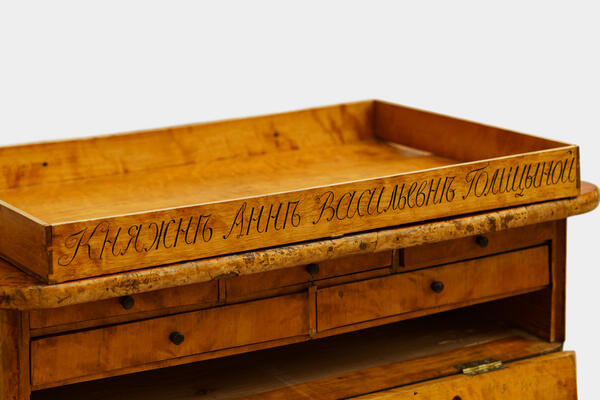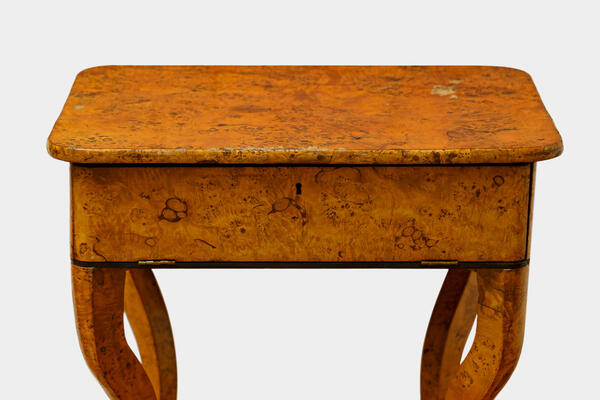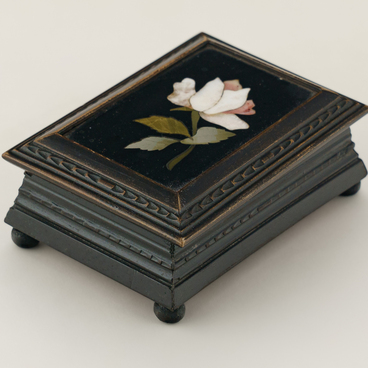The museum collection includes a polished ladies’ needlework table.
This piece of furniture was one of the most exquisite in the interior of a noble house. Ladies demonstrated their love of needlework through their skillfully made work tables. Such furniture often became a centerpiece of a boudoir, drawing room or study.
In addition to its aesthetic function, the table could serve as a jewelry box or a work surface that could be used for reading books and sheet music, drawing and writing.
The structures of needlework tables were movable and lightweight. Unlike massive gilded furniture, these household items could be moved around and carried from one room to another. During the day they were placed close to the window, and in the evening, they were moved to the sofa. The most convenient was a table with one or two or three shallow drawers. The item presented in the museum’s exhibition can be attributed to this type.
The top board of the exhibit is rectangular with rounded edges; it rests on an underframe and has a hinged lid. Under the lid there are three rows of flat drawers: in the lower row there is one drawer with two mahogany knobs, in the second row there are two drawers, in the upper row there are three drawers with a knob-button on each. The underframe rests on four cabriole legs, with its bottom board made of coniferous wood and the outer edge inlaid with mahogany veneer.
This table recalls the Golitsyn stage of the history of the Karabikha estate. The owner of the interior piece was presumably Anna Vasilyevna Golitsyna.
In the history of the Golitsyn family there were three Anna Vasilyevnas. The table could not belong to the first two, as they lived in the second half of the 18th century. The third was born in 1801 and died in 1879; she was married to Prince Nikolay Petrovich Gagarin and was a distant relative of the Karabikha Golitsyns. Therefore, the table was probably made in the 1830s.
The princely Golitsyn family owned the village of
Bogorodskoye and the surrounding lands for a century and a half, starting from
the Peter the Great times. In the 1740s the Karabikha estate was built in this
area. In the early 1860s the estate was acquired by the poet Nikolay
Alexeyevich Nekrasov.






